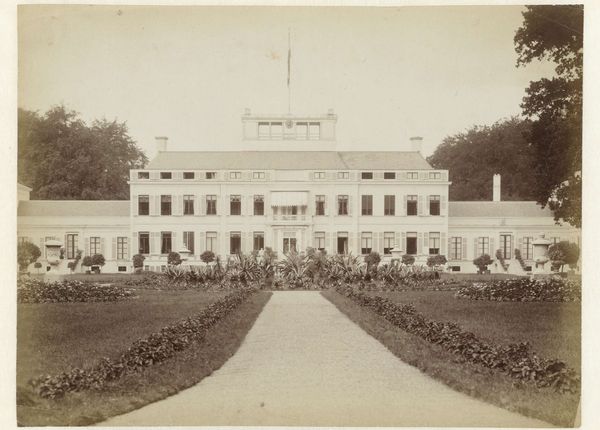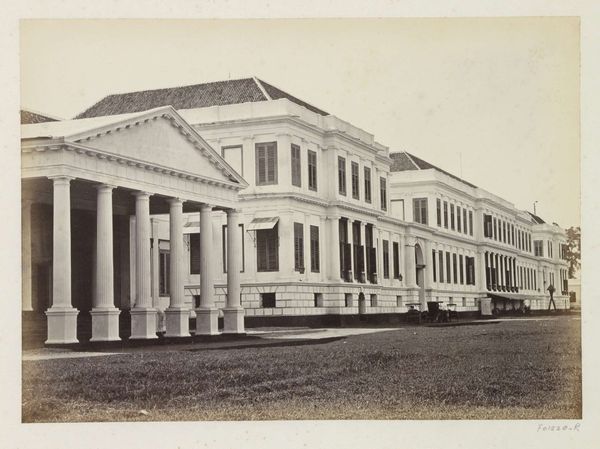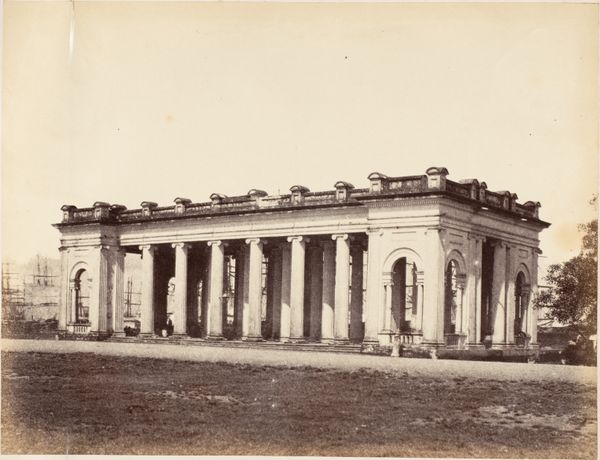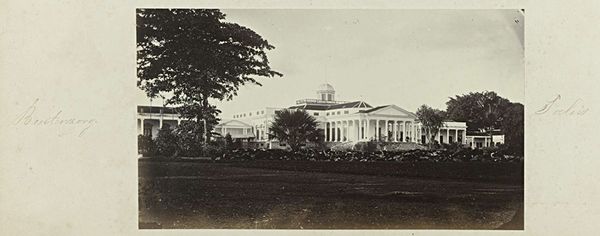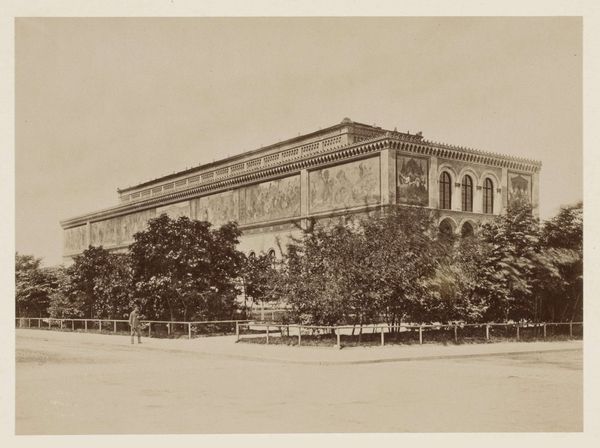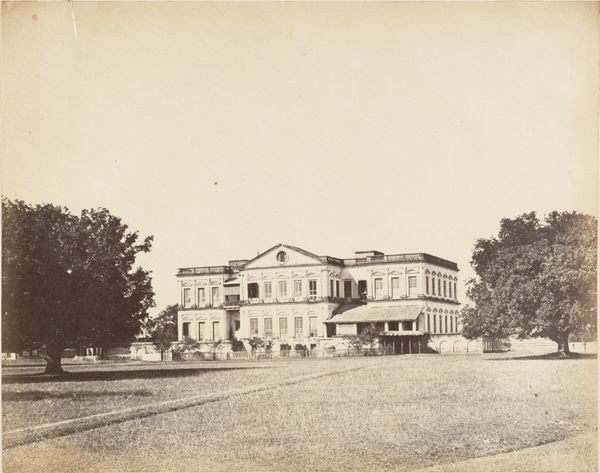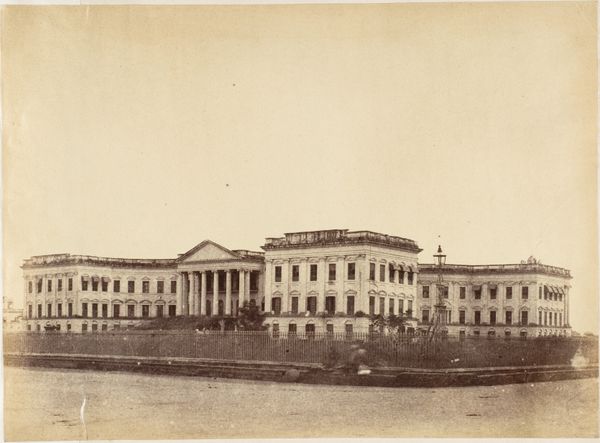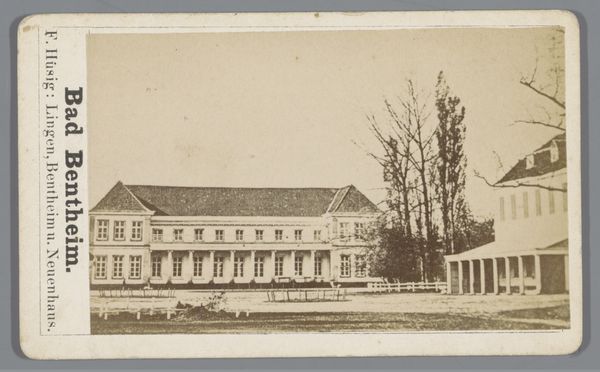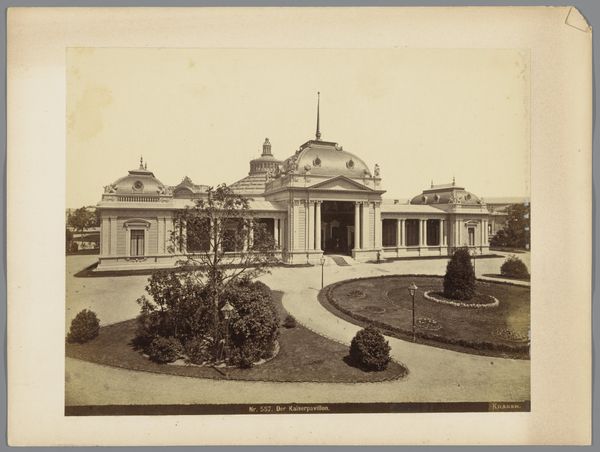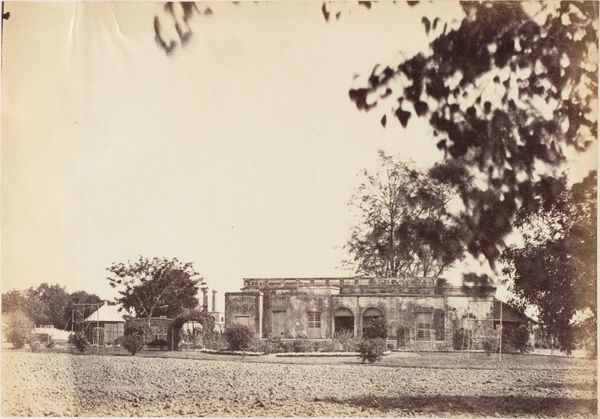
photography, albumen-print, architecture
#
16_19th-century
#
landscape
#
photography
#
historical photography
#
orientalism
#
albumen-print
#
architecture
Dimensions: Image: 16.8 x 24.7 cm (6 5/8 x 9 3/4 in.) Mount: 21 x 28.1 cm (8 1/4 x 11 1/16 in.)
Copyright: Public Domain
Curator: Here we have Captain R.B. Hill's albumen print, "Outram Institute, Calcutta," taken sometime in the 1850s. What strikes you initially? Editor: Austerity. It’s stark. This very formal, imposing building rising out of what looks like unkempt grassland. It speaks volumes about power dynamics. Curator: Indeed. The process of creating an albumen print then was quite labor intensive. Think about the sourcing of materials, the coating of the paper with egg whites, the exposure time...all incredibly deliberate. Editor: Absolutely. And placing this architecture, clearly inspired by neoclassical styles, in colonial Calcutta – it's a visual statement about the imposition of Western ideals, wouldn't you say? The building looks almost divorced from its environment, reflecting the social disconnect experienced by the colonizers. Curator: Precisely. And the very act of photographing, of documenting and archiving this institute, becomes an act of control, reinforcing colonial authority. It reminds me of how photography itself was used as a tool for anthropological studies at the time, framing and objectifying the colonized world. Editor: It certainly speaks to how even something seemingly objective like a photograph is steeped in political perspective. I am also stuck with the flat, almost monotonous light in this photograph. What purpose did this serve in representing this specific architecture? Curator: It does seem intended. Considering the constraints of albumen printing at the time, that choice also affects our reading today; the material qualities shaped how and what one can observe. What does it reveal? It suggests this building should be considered like other goods traded and circulated for their practical applications within the vast imperial project. Editor: Yes. And that, of course, complicates the legacy of institutions like the Outram Institute, forcing us to contend with their roles in perpetuating imperial power structures. Curator: Looking at the careful details embedded into the building, I will continue to appreciate the material labor necessary to make this picture possible, including all the hands involved, of course. Editor: This makes it an especially vital photograph, then, in the history of empire.
Comments
No comments
Be the first to comment and join the conversation on the ultimate creative platform.

